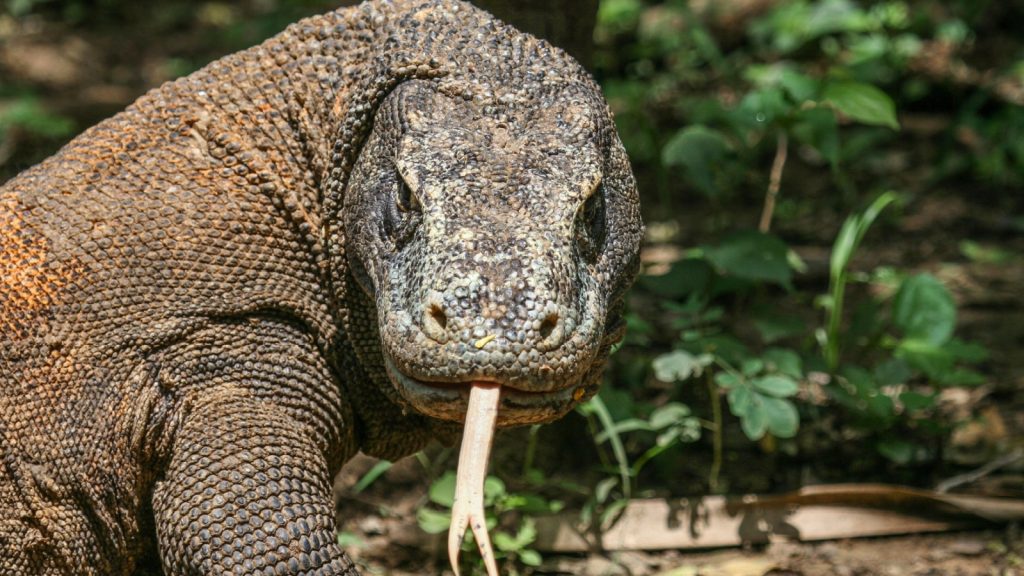Komodo dragons, native to Indonesia, are the largest living lizards in the world. These fearsome predators have sharp teeth coated in a thin layer of iron, according to a new study.

Ironclad Teeth
Researchers have discovered that the serrated edges and tips of Komodo dragon teeth are lined with a layer of iron. This metal coating may help reinforce each tooth, allowing Komodo dragons (Varanus komodoensis) to safely tear through the flesh of their prey, such as deer or water buffalo.
Comparing Iron-Coated Teeth
Iron-coated teeth aren’t unique to Komodo dragons. Beaver teeth, for instance, gain their toughness from iron-infused enamel. However, in Komodo dragons, the iron is applied on top of the enamel, similar to icing on a cake, says paleontologist Aaron LeBlanc of King’s College London.
Research Origins
LeBlanc and his colleagues initially set out to understand what made the teeth of meat-eating dinosaurs effective at cutting. They used Komodo dragons as a modern comparison due to their status as the largest living reptile with small, blade-shaped teeth. Under a microscope, the team noticed orange stains on the tips and serrated edges of Komodo dragon tooth specimens.
Related Reading: 14 Astonishing Things You Didn’t Know About Dinosaurs
Discovering the Iron Layer
Further chemical and structural imaging revealed that the orange stains were actually a layer of iron. The teeth of other modern reptiles, including some monitor lizards, crocodiles, and alligators, showed no visible signs of iron. However, some species did have a thin layer along the cutting edge, suggesting this trait might be more widespread among modern meat-eating reptiles.
Implications for Dinosaur Teeth
As for long-gone carnivorous dinosaurs, it’s still unclear whether their sharp tooth edges ever had an iron shield. LeBlanc explains that iron is difficult to analyze in fossilized dinosaur teeth because it’s pervasive. Over tens of millions of years, iron seeps into every bit of tooth tissue, complicating the study. The team hopes that further study of the Komodo dragon’s iron coatings might help answer this question.
Related Reading: 17 Monstrous Facts About Sarcosuchus – The Giant Croc That Hunted T-Rex
Conclusion
This discovery about Komodo dragon teeth adds to our understanding of these formidable predators and offers intriguing insights into the evolutionary adaptations of modern and ancient reptiles. As scientists continue to explore these iron coatings, they may uncover more about the mysterious lives of dinosaurs and their modern relatives.
Katy Willis is a writer, master herbalist, master gardener, and certified canine nutritionist who has been writing since 2002. She’s finds joy in learning new and interesting things, and finds history, science, and nature endlessly fascinating.
